
Introduction
The Sony ZV-1 II is intended to be the ideal all-round compact vlogging camera at an affordable price, with a 18-50mm-equivalent f/1.8-4 wide-angle zoom lens, 20-megapixel 1.0-type image sensor and an intelligent microphone.
The new Mark II version principally improves on the 3-year-old first generation model by widening the lens, enhancing the screen operability and enabling power delivery via the USB-C port.
This camera has a hybrid auto-focus system with 315 phase detection and 425 contrast detection AF points, can shoot at up to 24 images per second using the electronic shutter with continuous AF/AE tracking, supports video recording in 4K resolution at up to 30fps, and incorporates Sony’s special vlogger-friendly features – Background Defocus, Product Showcase and a Tally light.
Other key features include a vari-angle touchscreen LCD, a single UHS-I type SD card slot, active steadyshot mode, a built-in ND filter, ISO range of 100 to 12,800, a Bionz X image processor, and an upgraded intelligent 3-capsule mic for better audio.
The Sony ZV-1 II is available in Black only, priced at around £870 / $900 / €1000 in the UK, USA and Europe respectively. It is made in China.
Ease of Use
 |
The ZV-1 II is very much an evolution of the original ZV-1 model that was released back in 2020, rather than a massive upgrade, but it does offer some significant new benefits that elevate it above its predecessor.
Chief amongst these is the new lens, which is by far the single biggest difference between these two cameras.
The original ZV-1 had a 24-70mm f/1.8-2.8 equivalent non-removable zoom lens, as previously seen on the popular RX100 series (the RX100 IV to be specific).
While this made sense from an internal Sony point of view, in that they didn’t have to change the RX100 DNA too much, it quickly became apparent that 24mm was too restrictive for hand-held vlogging at arm’s length – it just wasn’t wide enough for a lot of situations.
Consequently, the new ZV-1 II has a much wider 18-50mm f/1.8-4 equivalent zoom lens that’s much better suited to vlogging, particularly when holding the camera out-front at arm’s length for selfie recording and group shots.
We were slightly critical of the 24mm lens in our ZV-1 review, so it’s great to see Sony listening to user and reviewer feedback and implementing this crucial change in the 2023 Mark II version.
 |
There are some notable tradeoffs, though, with the zoom range being noticeably shorter – 50mm versus 70mm – and the maximum aperture being a stop slower at the telephoto end – f/4 versus f/2.8 – both of which will make it harder to throw the background out of focus when shooting at the 50mm focal length than on the previous camera.
Sony have implemented the Clear Image Zoom digital zoom function on the ZV-1 II which they say increases the focal range from 50-100mm “without any appreciable loss in image quality”. We disagree – while it’s a nice feature to have if you really do need the longer focal lengths, we’d strongly recommend sticking to the zoom range of the lens if at all possible.
Note that on the ZV-1 II, the zoom can now be operated by using the touchscreen as well as by using the physical rocker switch on top of the camera, with selectable zoom steps running from 1x / 1.5x / 2x / 4x plus icons for W (wide-angle) and T (telephoto) to quickly change the angle of view at the press of an onscreen icon.
Unfortunately the ZV-1 II no longer has Optical Steadyshot built-in to the lens, as on the original model, which effectively gave you a couple of stops extra to play with when taking still images, and smoothing out the lightest of movements when shooting video.
Now there is only the option to switch on Active SteadyShot when recording video, which is a digital form of stabilisation. This crops in to the image slightly to give the camera room to digitally move the image frame around to compensate for any larger movements. It does work very well, creating very stable footage when hand-holding and taking out all but the heaviest of footsteps when walking.
The catch is that because of the slight crop, if you are vlogging your face will appear larger when in the frame as the lens effectively changes from 18mm to 23mm. Although this is mitigated somewhat by the new wider-angle lens, we would suggest only using it when walking or zooming in to show something. When you’re presenting to camera, try to stick to using the standard Steadyshot mode which doesn’t introduce any crop factor.
 |
Both the original ZV-1 and the 2023 ZV-1 II use exactly the same 20.1 megapixel, 1-inch stacked Exmor RS stacked sensor, so the image quality is essentially the same.
The ISO range of the Sony ZV-1 and ZV-1 II is the same, ISO 100 to ISO 12,800, which can be expanded by one stop to 25,600 using the special Multi Noise Reduction mode.
The stacked Exmor RS sensor in these two models gives them some distinct advantages over the ZV-E10 camera with its larger APS-C sensor, primarily in burst shooting and slow-motion video capabilities.
Speaking of which, the core video specs of the ZV1 and the ZV1 II are also essentially the same, with both being like a miniature version of the A7 series cameras. Virtually all of the video settings that are found much further up in the range are here.
On both cameras, video can be recorded in 4K resolution at up to 30fps, whilst Full HD can be recorded at up to 100/120fps, depending on whether you have chosen the PAL or NTSC format.
Both models feature Sony’s S-Log2 and S-Log3 gamma and HLG curves which enable them to record greater dynamic range.
 |
Sony’s range of Picture Profiles are also present and correct, meaning you can match the footage shot with the ZV-1 II or ZV-1 with higher-end cameras such as the A7 IV, making it an ideal accompaniment for those who may be using those cameras in more of a studio environment.
The stacked sensor additionally gives both cameras the ability to offer special HFR modes where you can shoot short video clips at 250, 500 or 1000fps, with footage then saved at 25fps for super slow motion playback.
It should be noted that although the HFR video is saved at the Full HD 1920×1080 resolution, it is upscaled from a much smaller recorded resolution; in the case of 1000fps this may be as low as 912×308.
The length of time you can record a clip is also restricted to just a few seconds depending on the chosen frame rate and whether you choose the Quality or Time mode.
Either way, it is long enough to create fascinating super slow motion footage, but for most users the 100 or 120fps modes will be more than enough whilst offering better quality.
Proxy recording is available, allowing low resolution 1280×720 resolution footage to be recorded alongside 4K or Full HD footage. This is great for those who may be editing video on older computers. Simply edit using the lower resolution proxy files, then switch to the full resolution 4K files when it comes to the fine-tuning and export.
 |
The built-in 3EV ND filter will help you to shoot at larger apertures on bright days, which is extremely useful when shooting video and trying to stick to the shutter speed being double the frame rate rule.
For example, at 25fps the ideal shutter speed is 1/50th sec. If you want to create a shallow depth of field on a bright sunny day you would be hard pushed to do this, but turning the ND filter on will darken the image just enough to allow an aperture 3 stops larger to be used, helping to create a shallower depth of field.
For photographers you may be able to get a slightly blurred effect on running water on a dark overcast day if you make the aperture as small as possible, but don’t expect it to enable you to take extremely long exposures. The ND filter can be easily switched on or off from the quick menu, or it can be set to auto when it will help you to achieve you desired settings when needed. It’s an extremely useful feature to have.
The Mark II version does have a couple of new video features. Firstly, Sony have added the Cinematic Vlog setting from the ZV-E1 to the new ZV-1 II model.
This allows you to choose from a range of different cinematic Looks and Moods and combine them in your own particular style. The resulting video is automatically shot in the widescreen Cinemascope aspect ratio (2.35:1) at 24fps with black bands above and below the image for a true cinematic feel, all by simply selecting the Cinematic Vlog option.
Also new for the ZV-1 II are a selection of 10 different Creative Looks, a feature that has again been inherited from the ZV-1 E1. You can see these demonstrated in the Image Quality section of this review.
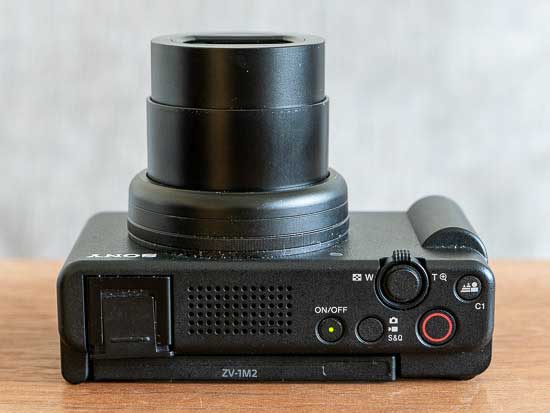 |
Both ZV-1 models offer Sony’s special vlogger-friendly features – Background Defocus, Product Showcase and a Tally light.
Both have a Background Defocus button. For vloggers the aim of this button is to switch between having the background blurred or clear. In photographic terms it is switching the aperture between the largest available for the attached lens and a stopped down value.
The Product Showcase mode is an autofocus mode that alerts the camera to switch the focus from a person’s face to an object that may be held up in front of the camera. It is a popular YouTube technique for when wanting to show an item to the viewer, but on cameras with slower autofocus it can leave the focus fixed on the presenter’s face with the product out of focus, and vice versa. The Product Showcase mode solves that issue, adding another plus point for vlogging with these cameras.
A recording lamp (tally light) is also provided on the front face of the camera body for an at-a-glance indication of the current video recording status, and a red color recording alert square is displayed on the LCD screen too (both can be turned off).
Live streaming is possible directly simply by connecting the Zv-1 II to a computer or compatible mobile device via USB, eliminating the need for a video capture card. This allows the camera’s video and audio capabilities to be used for live social media and video conferencing. Both the UVC and UAC standards are supported for improved picture and sound quality during streaming.
Sony have significantly improved the microphone quality on the new Z-V1 II when compared to the original model.
 |
The upgraded intelligent 3-capsule mic inherited from the ZV-E10 now offers three different settings – front, rear and all directions – so that you have more control over the sound recording depending on where your subject is positioned.
It also sports a wind reduction design with a detachable Dead Cat wind shield provided in the box. Clear voice isolation is great for recording your voice and not the background, and there’s also a dedicated Multi Interface Shoe for an external microphone and other extra accessories.
Both cameras also offer an all important 3.5mm microphone input, but sadly there is still no headphone output.
If you are familiar with the autofocus settings of the Sony A7 cameras you will be pleasantly surprised by the options found on the ZV-1 II.
Both ZV-1 cameras have the same hybrid auto-focus system with 315 phase detection and 425 contrast detection AF points.
Both of them also offer Sony’s excellent real-time tracking system, including Eye AF for humans/animals for stills and humans for video, plus the Face Priority auto-exposure (AE) function, which detects and prioritises the subject’s face and adjusts the exposure to ensure the face is depicted at an ideal brightness.
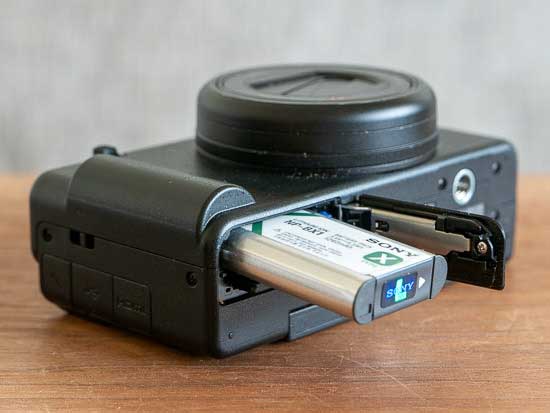 |
New to the ZV-1 II is the Multi-face Recognition mode which has trickled down from the recently launched ZV-E1 full-frame camera.
In this mode the ZV1 II will automatically stop down the aperture when another person comes into the frame to help ensure that all the people are in focus, rather than just the original one, which is a great feature for group selfies where you want everyone to be in focus.
Also new to the Mark II version is animal AF tracking in the movie mode – on the ZV-1 it’s limited to stills shooting only.
The ZV-1 II utilises the powerful Bionz X image processor, which allows it to shoot at up to a very impressive 24 images per second using the electronic shutter, complete with continuous AF/AE tracking.
The original ZV1 and 2023’s ZV1 II cameras are virtually identical in terms of their external design, apart from the different zoom lens and a massive 2g in weight! (the Mark II version is actually lighter at 292g).
Where they most differ is the onscreen controls, with the ZV-1 II providing a greatly improved and expanded smartphone-like user experience that better suits its target audience.
 |
You can shoot entirely using the on-screen icons along the bottom of the screen, and a simple swipe-up from the bottom quickly accesses the Function menu screen which houses frequently used settings.
All of the external buttons and controls are the same on both models, there’s just a lot more touchscreen control available on the new Mark II version.
The ZV-1 II has a plastic, or polycarbonate, body, as opposed to the all-metal design of the RX100. Thankfully in-hand the body seems solid, all the components fit very nicely together, there are no creaks or weak looking joints, and everything is very well designed and assembled.
Neither the ZV1 II or the ZV1 offer any certified level of weather-sealing, so you’ll need to be careful and/or protect the camera in inclement weather.
Also, neither camera has a viewfinder, so if you don’t enjoy using an LCD screen for composition, you’ll need to look elsewhere entirely.
Instead there’s just a 3-inch, 921,000 dot LCD screen which is hinged to the side of the camera and offers 180 degree rotation.
 |
This means it can be flipped out to the side and rotated forwards by 180 degrees for vlogging or self-portraits (or selfies as they are now known), as well as being able to fold the screen in to the camera body to offer protection when you just want to carry the camera loose in a bag or pocket.
The rear of the camera is also identical, with the familiar directional control dial placed around a central selection button. Around this sit 4 other buttons to access regularly used features.
The function button on the rear of the camera operates in exactly the same was as it does on the RX100 and A7 series cameras, so you can use it to quickly access features you will need the most, such as white balance, Picture Style and the AF settings.
The ‘Trash’ button also acts as the ‘C2’ custom button, which by default is set to access the Product Showcase mode. This is an autofocus mode that alerts the camera to switch focus from a person’s face to an object that may be held up in front of the camera.
This is a popular YouTube technique for when wanting to show an item to the viewer, but on cameras with slower autofocus systems it can leave the focus fixed on the presenter’s face with the product out of focus, and vice versa. The Product Showcase mode solves that issue, adding another plus point for vlogging with the ZV-1 II.
The menu system of the ZV-1 II is identical to other Sony cameras, so existing users will have no problem navigating it, whilst those less familiar may find the odd item in a curious location.
 |
Most usefully the option to customise the Function Button Quick menu remains, and it can have two different versions depending on whether you are shooting stills or video.
There is also the MyMenu screen, where you can add any other the Menu settings to your own personalised Menu Screen, and there is also the option to make this the default screen that pops up when the Menu button is pressed.
The video recording button occupies a prominent position of the top-plate of the ZV-1 II, allowing it to have a larger, rubberised thumb grip which is much nicer to use than the one found on the RX100-series cameras.
On top of the camera are a large three-capsule direction microphone and a Multi Interface hot-shoe. The shoe allows for any standard accessories to be mounted, with microphones and LED lights the most obvious. However, the Multi Interface part allows for compatible to Sony accessories to work intelligently with the camera and also draw power where needed.
There is a Mode button next to the camera power button, rather than a more traditional shooting mode dial as found on the RX100-series cameras. It takes a second or two longer to switch modes using the button and menu system, but it certainly isn’t a deal breaker.
As well as the shutter and zoom control toggle, the top-plate also sees the addition of the video record button. This is much larger than the small button found on the RX100 cameras, and it is marked with a red ring to easily identify it against the shutter button.
Finally on the top of the camera there is the Background Defocus button. For vloggers the aim of this button is to switch between having the background blurred or clear. In photographic terms it is switching the aperture between the largest available for the focal length (so between f/1.8 and f/2.8) and f/5.6. It is a useful button to have available for video, but even for stills photography it is something we would occasionally use to make a very quick aperture change.
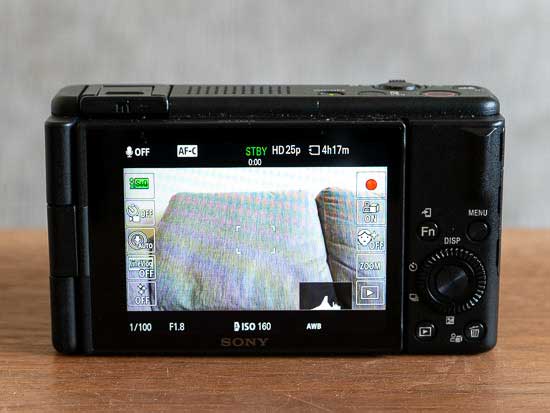 |
On the side of the ZV-1 II sit three external ports – HDMI, that all important 3.5mm microphone input, and a new USB-C port which thankfully replaces the already outdated in 2020 Micro USB port found on the original model.
The HDMI-out allows for external video recording which will allow you to squeeze every bit of detail out of the 1-inch sensor, although attaching any external device kind of defeats the point of this being a small vlogging camera. Still, it is a useful option to have if only to playback video or images directly from the camera.
The USB-C socket allows for power to be supplied to both keep the ZV-1 II going with a battery installed, or to charge the battery when the camera is not in use. It’s an extremely useful feature to have given that the NP-BX1 batteries are quite small and those planning to shoot video would be advised to purchase a few, or having a USB powerbank on standby.
Crucially, the new USB-C port can as another audio interface for the camera, allowing headphones to be used, which is important as the ZV-1 II doesn’t have a built-in headphone socket.
Under testing conditions the battery life is quoted as being between 45-75mins of video or 260 stills, depending on how many other operations you are doing, zooming, power the camera on and off etc.
Taking into account reviewing images and video, zooming in and out, having the screen on whilst not recording and taking still images, we would expect real world usage to be below the 45mins quoted. It’s worth mentioning here that the maximum record time for a single continuous video clip is the usual 29mins 59 secs to avoid extra levies placed on European camcorder imports.
Note that if you choose to use the external Sony GP-VPT2BT Bluetooth shooting grip (which Sony strongly recommends), it no longer blocks the battery/memory card compartment.
The ZV-1 and ZV-1 II both have a single memory card slot which supports UHS-I type SD cards, rather than the faster UHS-II standard.
Image Quality
All of the sample images in this review were taken using the 20 megapixel SuperFine JPEG setting, which produces an average image size of around 7Mb.
With the stacked sensor from the ZV-1 II being used in multiple Sony RX100-series cameras, it is very much a known quantity and existing users should know what to expect.
As a backside illuminated sensor, most of the circuitry of the sensor is found behind the photosites, which maximises the light gathering capabilities and makes it an impressive sensor given its 1” size. And with this circuitry directly on the sensor it enables the camera to shoot at up to 24fps.
With a sensitivity range of between ISO 125 and 12,800, it has a good range for a compact camera, without going to the extremely high settings that would be pushing the sensor too far. What I usually do for most cameras is to avoid the highest two sensitivity settings unless you really have no choice but to use them, and this applies here.
There are also two lower sensitivities of ISO 80 and ISO 100, however these offer no improved image quality as are merely using the the native ISO 125 setting, increasing the exposure time and then adjusting the signal gain to darken the image. The result is that although it will allow for slower shutter speeds or a larger aperture to be used, there is a reduced dynamic range due to the highlights tending to clip more easily.
Throughout the entire range the default noise reduction settings for JPEG images reduce both luminance and colour noise. Personally I feel that the luminance noise reduction is a little heavy handed when you start to reach settings around ISO 1600; I would prefer a little more detail and luminance noise than the slight blur that is applied when luminance noise is reduced. That said there is plenty of detail at lower ISO sensitivities, particularly if you adjust the raw files.
Colour noise is well reduced throughout the cameras range with the colour noise reduction set to Normal by default. There is some loss of colour saturation at higher sensitivities so I may be inclined to change the setting to ‘Low’ in some circumstances, particularly if shooting on a bright sunny day rather than in low light.
For a compact camera the 1-inch sensor obviously has an advantage over standard compact or smartphone size sensor with more detail and less noise, though you still need to consider that this isn’t an APS-C or Full frame sensor, so sticking to the lower sensitivities is always going to produce the best results.
Noise
The Sony ZV-1 II has eight sensitivity settings at full resolution ranging from ISO 125 to ISO 12800, expandable to ISO 80. Here are some 100% crops which show the noise levels for each ISO setting for both JPEG and Raw formats.
| JPEG | Raw |
|
ISO 80 (100% Crop) |
ISO 80 (100% Crop) |
 |
 |
|
ISO 125 (100% Crop) |
ISO 125 (100% Crop) |
 |
 |
|
ISO 200 (100% Crop) |
ISO 200 (100% Crop) |
 |
 |
|
ISO 400 (100% Crop) |
ISO 400 (100% Crop) |
 |
 |
|
ISO 800 (100% Crop) |
ISO 800 (100% Crop) |
 |
 |
|
ISO 1600 (100% Crop) |
ISO 1600 (100% Crop) |
 |
 |
|
ISO 3200 (100% Crop) |
ISO 3200 (100% Crop) |
 |
 |
|
ISO 6400 (100% Crop) |
ISO 6400 (100% Crop) |
 |
 |
|
ISO 12800 (100% Crop) |
ISO 12800 (100% Crop) |
 |
 |
Chromatic Aberrations
The Sony ZV-1 II handled chromatic aberrations very well during the review, with some purple fringing present around the edges of objects in high-contrast situations, as shown in the examples below.


Macro
The Sony ZV-1 II allows you to focus on a subject that is 5cms away from the camera when the lens is set to wide-angle.
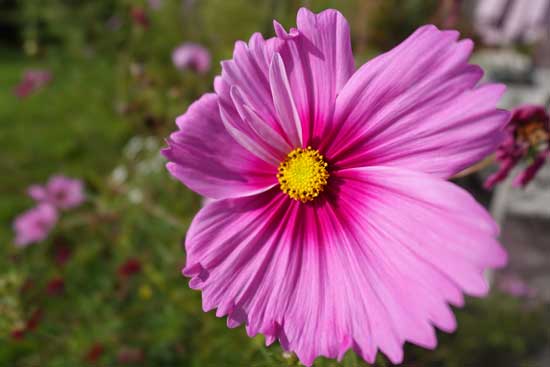

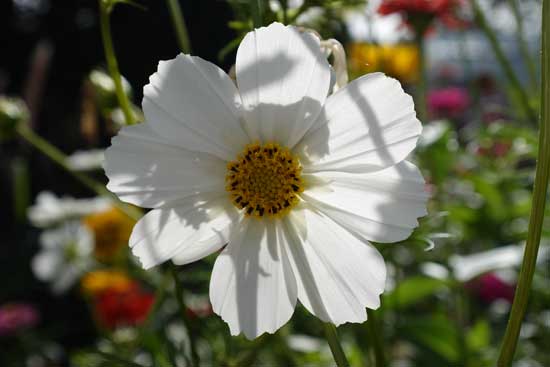



Vignetting
Light fall-off isn’t really an issue even when shooting pale scenes that fill the frame wide open at f/1.7 / f/4.

18mm / f/1.8

50mm / f/4
Night
The Sony ZV-1 II’s maximum shutter speed is 30 seconds in the Manual shooting mode, which is great news if you’re seriously interested in night photography.

Dynamic Range
Again, the advantage of a 1-inch sensor compared to a standard smartphone or compact sensor means the ZV-1 II offers a good dynamic range, though obviously it can’t quite match that of an APS-C or full frame sensor. There is detail that can be recovered from highlight and shadow areas when you switch to shooting raw images, though you do have to keep an eye on noise being introduced.
Sony has employed its usual Dynamic Range Optimiser feature in the ZV-1 II. This has 7 different settings Off, Auto and levels 1-5. When in this mode the exposure is adjusted to retain highlight detail, with the curve on the shadow areas adjusted to lighten them to maximise the dynamic range available. I found the DRO feature to work well, with Level 3 or 4 being my preferred setting when I was using it.
|
Off |
 |
|
Level 1 |
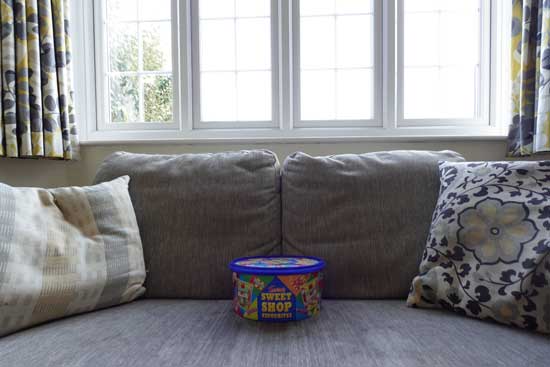 |
|
Level 2 |
 |
|
Level 3 |
 |
|
Level 4 |
 |
|
Level 5 |
 |
Creative Looks
There are 10 Creative Look preset effects that you can use to change the look of your images which are available when shooting JPEG and/or Raw files.
There are ten creative look presets for JPEG pictures and an additional six ‘custom’ presets can be manually stored for quick access. The presets are Standard (‘ST’), Portrait (‘PT’), Neutral (‘NT’), Vivid (‘VV’), ‘VV2’, ‘FL’, ‘IN’, ‘SH’, Black & White (‘BW’) and Sepia (‘SE’).
|
ST |
 |
|
PT |
 |
|
NT |
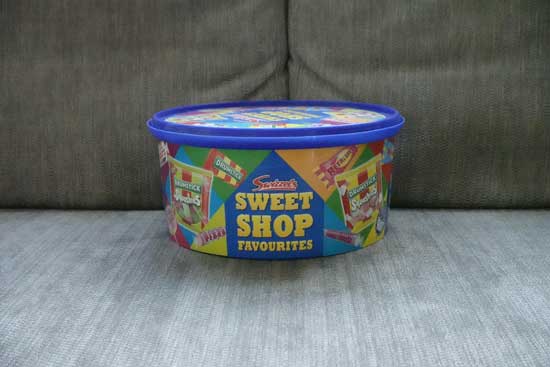 |
|
VV |
 |
|
VV2 |
 |
|
FL |
 |
|
IN |
 |
|
SH |
 |
|
BW |
 |
|
SE |
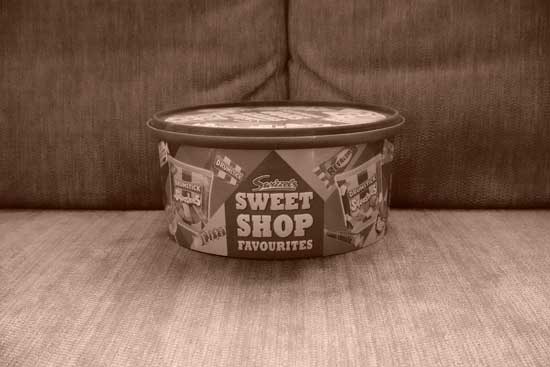 |
Picture Profiles
The Sony ZV-1 II offers a range of 10 Picture Profiles which are available when shooting JPEG and/or Raw files.
In addition to the creative looks, there are picture profile primarily designed for video use. By default, the ten parameters (PP1-PP10) are set to cover the following in-camera gamma profiles; Movie, still, Cine1-4, ITU709, ITU 709 (800%), S-Log-2, S-Log3 and HLG1-3), with manual control over numerous parameters including black level, colour mode and saturation.
|
PP1 |
 |
|
PP2 |
 |
|
PP3 |
 |
|
PP4 |
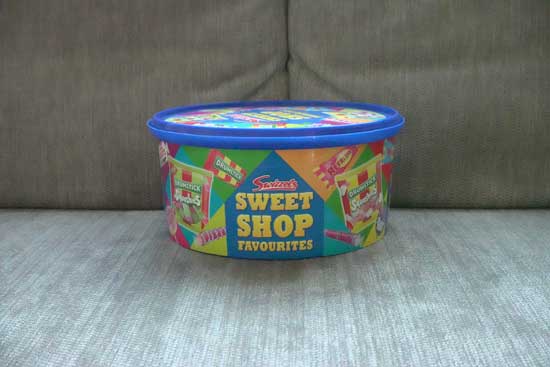 |
|
PP5 |
 |
|
PP6 |
 |
|
PP7 |
 |
|
PP8 |
 |
|
PP9 |
 |
|
PP10 |
 |
Sample Images
This is a selection of sample images from the Sony ZV-1 II camera, which were all taken using the 20 megapixel SuperFine JPEG setting. The thumbnails below link to the full-sized versions, which have not been altered in any way.
Sample RAW Images
The Sony ZV-1 II enables users to capture RAW and JPEG format files. We’ve provided some Sony RAW (ARW) samples for you to download (thumbnail images shown below are not 100% representative)..
Sample Movies & Video
This is a sample 4K movie at the quality setting of 3840 × 2160 pixels at 30 frames per second. Please note that this 16 second movie is 201Mb in size.
This is a sample 4K movie at the quality setting of 3840 × 2160 pixels at 30 frames per second. Please note that this 11 second movie is 134Mb in size.
This is a sample 4K movie at the quality setting of 3840 × 2160 pixels at 30 frames per second. Please note that this 12 second movie is 138Mb in size.
This is a sample 1080p movie at the quality setting of 1920 × 1080 pixels at 60 frames per second. Please note that this 11 second movie is 80Mb in size.
This is a sample slow-motion movie at the quality setting of 1920 × 1080 pixels at 120 frames per second. Please note that this 44 second movie is 96Mb in size.
Product Images

















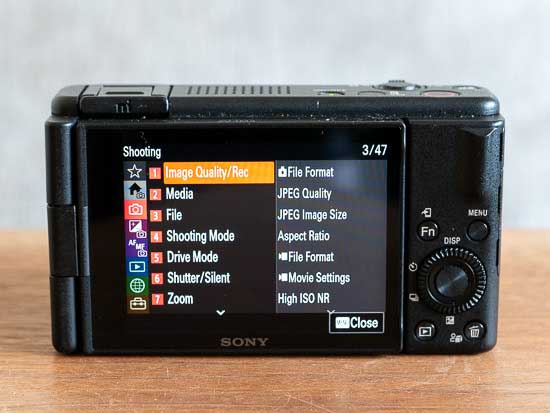










Conclusion
It might not be as innovative and therefore as exciting, but importantly the ZV-1 II addresses nearly all of the significant faults of the first generation model, albeit at a higher price point and with a couple of caveats about the lens.
The incorporation of a wider-angle lens for easier selfies and group framing, USB-C port to allow faster charging and headphone use, and greatly enhanced touchscreen functionality rectifies most of the concerns that we had with the ZV-1, with only the short battery life left to bemoan.
There’s also greater audio quality thanks to the new intelligent 3-capsule mic, a slightly better AF system, and the Cinematic Vlog setting from the ZV-E1, all of which go some way to justifying the £170 / $100 price increase over the 2020 original.
While the new 18-50mm lens is better suited to vlogging due to the wider angle of view that it provides, conversely the shorter telephoto reach and slower maximum aperture at the 50mm setting make the ZV-1 II less well-suited to stills photography, or at best less versatile than the original model.
Another important thing to consider with the new lens is that it no longer offers optical image stabilisation, as on the original ZV-1, again making this camera less well-suited to stills.
Instead you have to rely on active stabilisation, which only works for video recording and effectively changes the focal length to around 23mm, barely wider-angle than the 24mm lens on the ZV1.
So it really all comes down to the lens for a lot of users. If you’re more of a photographer than a videographer, the original ZV-1 that is still on sale is probably a better fit and cheaper too, while for out-and-out videographers the Mark II version is definitely the one to go for.
As well as the ZV-1, you could also consider last year’s Sony ZV-1F model, which offers quite a lot of the same core specs as the ZV-1 II – 4K/30p, 20 megapixels, Sony’s special vlogger-friendly features – at around half the price.
Having said that, the ZV-1F’s less sophisticated contrast-based auto-focusing, slower burst shooting, lack of an ND filter and fixed 20mm rather than zoom lens may push some users firmly towards the more expensive but crucially more capable ZV-1 II.
| Ratings (out of 5) | |
|---|---|
| Design | 4.5 |
| Features | 4.5 |
| Ease-of-use | 4 |
| Image quality | 5 |
| Value for money | 4 |
Main Rivals
Listed below are some of the rivals of the Sony ZV-1 II.
The Canon EOS R50 is a super-compact mirrorless camera with an APS-C crop sensor that can shoot at 15fps and record 4K/30p video. Can the R50 compete with the likes of the Fujifilm X-S10, Nikon Z30 and Sony ZV-E10? Find out now by reading our in-depth Canon R50 review with full-size sample photos and videos.

The Canon PowerShot V10 is an affordable compact camera specifically aimed at vloggers, with a unique vertical design with built-in kick-stand, 4K/30p video recording and a 19mm wide-angle lens. Should you upgrade from your smartphone to the Canon V10? Read our in-depth Canon PowerShot V10 review to find out…

The new Fujifilm X-S20 aims to be a hybrid mirrorless camera for the masses, offering 6K video, 26 megapixel stills, a specific shooting mode for vloggers and long battery life, all in a small, well-built body. Is the XS20 the ultimate do-it-all camera? Find out now by reading our in-depth Fuji XS20 review complete with full-size sample images and videos.

The A6700 is the new premium model in Sony’s extensive range of APS-C mirrorless cameras, but can it beat both its main rivals and its cheaper siblings? Find out now by reading our in-depth Sony A6700 review, complete with full-size sample images and videos.

The Sony ZV-1 is a new compact camera that’s been built from the ground up for vlogging, with a vari-angle screen, fast auto-focusing, three-capsule direction microphone, and a wealth of vlogger-friendly shooting modes. Is this the ultimate camera for aspiring YouTube creators? Read our in-depth Sony ZV-1 review to find out…

The Sony ZV-1F is an affordable compact camera aimed at vloggers, with 4K/30p video, a vari-angle screen, a wide-angle lens, and a wealth of vlogger-friendly shooting modes. Should you upgrade from your smartphone to the ZV1F? Read our in-depth Sony ZV-1F review to find out…

The Sony ZV-E10 is a new APS-C sensor mirrorless camera that’s clearly targeted at videographers, with a vari-angle screen, fast auto-focusing, three-capsule direction microphone, and a wealth of vlogger-friendly shooting modes. Is this the ultimate mirrorless camera for aspiring YouTube creators? Read our in-depth Sony ZV-E10 review to find out…
Review Roundup
Reviews of the Sony ZV-1 II from around the web.
The Sony ZV-1 II is less of a sequel and more of an alternative variation of the original ZV-1, both on the specs sheet and in your hand it is just hard to separate from the original model. They both share the same sensor, video performance, and battery life. The only thing that really separates these two cameras is the lens, and even then I cannot say the new lens is definitively a better choice than the previous one.
Read the full review »
This is a well-built, responsive, almost pocket-sized hybrid suited to a variety of uses, and a sensible ‘all-in-one’ option for everyday adventures. The new wider zoom lens setting makes it better suited than its predecessor to group portraits, shooting in landscape, and simply fitting more into frame when vlogging.
Read the full review »
Sony’s first compact vlogging camera, the ZV-1, has proven to be quite popular with the content creation crowd. It offers excellent image quality, easy controls and a tiny, pocketable form factor – all at an approachable price.
Read the full review »
All the major camera manufacturers love vlogging and as a result they all continue to churn out new models. Sony was one of the first to jump on that bandwagon and has now updated one of its earliest models in the new Sony ZV-1 Mark II.
Read the full review »
Specifications
General
- CAMERA TYPE
- Digital camera
Lens
- F-NUMBER (MAXIMUM APERTURE)
- F1.8 – F4.0
- FOCAL LENGTH
- f = 6.9 – 17.6 mm
- FOCAL LENGTH (35MM FORMAT EQUIVALENT)
- 18 – 50 mm
- FOCUS RANGE (FROM THE FRONT OF THE LENS)
- Approx. 5 cm (0.17 ft) to infinity
Camera Section
- SENSOR TYPE
- 1.0-type (13.2 mm x 8.8 mm) Exmor RS CMOS sensor
- NUMBER OF PIXELS (EFFECTIVE)
- Still images: Approx. 20.1 megapixels, Movies: Approx. 16.8 megapixels max.
- NUMBER OF PIXELS (TOTAL)
- Approx. 21.0 megapixels
- BUILT-IN ND FILTER
- ND (1/8 ND)
- COLOR TEMPERATURE RANGE
- 2500 K – 9900 K
Recording (still images)
- RECORDING FORMAT
- JPEG (DCF Ver. 2.0, Exif Ver. 2.32, MPF Baseline compliant), RAW (Sony ARW 4.0 format)
- IMAGE SIZE (PIXELS) [3:2]
- 1.0-type L: 5472 x 3648 (20 M), M: 3888 x 2592 (10 M), S: 2736 x 1824 (5.0 M)
- IMAGE QUALITY MODES
- RAW, RAW+JPEG, JPEG
Recording (movie)
- VIDEO COMPRESSION
- XAVC S: MPEG-4 AVC/H.264
- AUDIO RECORDING FORMAT
- LPCM 2ch (48 kHz 16 bit)
Recording system (movie)
- MOVIE RECORDING SYSTEM (XAVC S 4K)
- 29.97p (100 Mbps / 60 Mbps), 25p (100 Mbps / 60 Mbps), 23.98p (100 Mbps / 60 Mbps)
- MOVIE RECORDING SYSTEM (XAVC S HD)
- 119.88p (100 Mbps / 60 Mbps), 59.94p (50 Mbps / 25 Mbps), 29.97p (50 Mbps / 16 Mbps), 23.98p (50 Mbps), 100p (100 Mbps / 60 Mbps), 50p (50 Mbps / 25 Mbps), 25p (50 Mbps / 16 Mbps)
Movie Functions
- SLOW & QUICK MOTION (SHOOTING FRAME RATE)
- Yes
- PROXY RECORDING
- Yes
- TC / UB
- Yes
Recording System
- MEMORY CARD SLOT
- Multi slot for Memory Stick Duo/SD memory card
Focus System
- FOCUS TYPE
- Fast Hybrid AF (phase-detection AF / contrast-detection AF)
- FOCUS POINT
- Still images: Max. 315 points (phase-detection AF), Movies: Max. 273 points (phase-detection AF)
- FOCUS TYPE
- Human, Animal
- FOCUS TYPE
- Human, Animal
- OTHER FEATURES
- AF Subj. Shift Sensitivity (Movie), AF Transition Speed (Movie), Circ. of Focus Point
Exposure Control
- METERING TYPE
- 1200-zone evaluative metering
- METERING SENSITIVITY
- EV0 to EV24 (ISO 100 equivalent)
- EXPOSURE COMPENSATION
- +/- 3.0 EV (1/3 EV steps)
- ISO SENSITIVITY
- Still images: ISO 125 – 12800 (expandable to ISO 80 – 12800), AUTO (ISO 125 – 12800, selectable lower limit and upper limit), Movies: ISO 125 – 12800 equivalent, AUTO (ISO 125 – 12800, selectable lower limit and upper limit)
- ANTI-FLICKER SHOOT.
- –
Viewfinder
- VIEWFINDER TYPE
- –
LCD Screen
- MONITOR TYPE
- 7.5 cm (3.0-type) type TFT
- TOUCH PANEL
- Yes
- NUMBER OF DOTS
- 921 600 dots
- ADJUSTABLE ANGLE
- Opening Angle: Approx. 176 °, Rotation Angle: Approx. 270 °
Other Features
- OTHER FEATURES
- Cinematic Vlog Setting, My Image Style, Creative Look, Product Showcase Set., Background Defocus, Soft Skin Effect, Custom function, Picture Profile
- CLEAR IMAGE ZOOM
- Approx. 2x
Shutter
- SHUTTER TYPE
- Electronic shutter
- SHUTTER SPEED
- Still images: 1/32000 to 1/4 s,Movies: 1/12800 to 1 s
- FLASH SYNC. SPEED
- 1/100 s
Image Stabilization
- TYPE
- Electronic
- MODE
- Movie: Active / Off
Flash
- TYPE
- –
- CONTROL
- Pre-flash TTL
- FLASH COMPENSATION
- +/- 3.0 EV (switchable between 1/3 EV steps)
- EXTERNAL FLASH COMPATIBILITY
- Sony α System Flash compatible with Multi Interface Shoe
Drive
- CONTINUOUS DRIVE SPEED (APPROX. MAX.)
- Hi: 24 fps
- NO. OF RECORDABLE FRAMES (APPROX.)
- JPEG Extra fine L: 170 frames, JPEG Fine L: 188 frames, JPEG Standard L: 189 frames, RAW: 80 frames, RAW & JPG: 78 frames
Playback
- MODES
- Enlarged display mode, Protect, Rating, Shot Mark (Movie), Divider Frame, Photo Capture
Accessibility
- FUNCTIONS
- Screen reader, Focus Magnifier, Peaking Display, Subject Recognition in AF, Touch Focus, Touch Tracking, Touch Shutter, Touch AE, Vari-angle LCD screen, Custom function
Interface
- PC INTERFACE
- Mass-storage / MTP
- USB TYPE-C TERMINAL
- Yes (Hi-Speed USB 480 Mbps (USB 2.0) compatible)
- WIRELESS LAN(BUILT-IN)
- Yes (Wi-Fi Compatible, IEEE 802.11b/g/n (2.4 GHz band))
- BLUETOOTH
- Yes (Bluetooth Standard Ver. 4.2 (2.4 GHz band))
- HDMI CONNECTOR
- HDMI micro connector (Type-D) 3840 x 2160 (30p / 25p / 24p) / 1920 x 1080 (60p / 50p / 24p) / 1920 x 1080 (60i / 50i), YCbCr 4:2:2 8bit / RGB 8bit
- MULTI INTERFACE SHOE
- Yes
- MIC TERMINAL
- Yes (3.5 mm Stereo minijack)
- FUNCTIONS
- View on Smartphone, Remote control via Smartphone, PC Remote
USB Streaming
- VIDEO DATA FORMAT
- MJPEG
- VIDEO RESOLUTION
- 1280 x 720 (30p)
- AUDIO DATA FORMAT
- LPCM 2ch (16bit 48 kHz)
Audio
- MICROPHONE
- Built-in, stereo
- SPEAKER
- Built-in, monaural
Power
- SUPPLIED BATTERY
- Rechargeable Battery Pack NP-BX1
- BATTERY LIFE (STILL IMAGES)
- Approx. 290 shots (LCD monitor) (CIPA standard)
- BATTERY LIFE (MOVIE, ACTUAL RECORDING)
- Approx. 45 min (LCD monitor) (CIPA standard)
- BATTERY LIFE (MOVIE, CONTINUOUS RECORDING)
- Approx. 75 min (LCD monitor) (CIPA standard)
- INTERNAL BATTERY CHARGE
- Yes
- USB POWER SUPPLY
- Yes
- POWER CONSUMPTION WITH LCD SCREEN
- Still images: Approx. 1.9 W, Movies: Approx. 3.6 W
Operating temparature
- OPERATING TEMPERATURE
- 0 – 40 ℃ / 32 – 104 °F
Size & Weight
- DIMENSIONS (W X H X D)
- Approx. 105.5 x 60.0 x 46.7 mm (4 1/4 x 2 3/8 x 1 7/8 inches)
Supplied Accessory
- WHAT’S IN THE BOX
- Rechargeable Battery NP-BX1, Wind Screen, Wind Screen Adaptor
Colour Options
Black
What’s In The Box
- Rechargeable Battery NP-BX1, Wind Screen, Wind Screen Adaptor
Your Comments
Credit : Source Post



